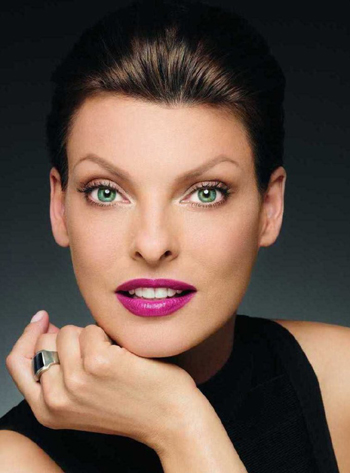It's been over a month since Raf Simons' debut at Christian Dior - a couture debut, no less. The reason for my delayed review is that I wanted to write this in a calm, rational state of mind, unlike the state of mind I was in when I first saw this collection. When I get worked up, my comments can be biased or scathing, and I don't want to look back on my past blog posts and see something I wish I could have refined. However, that's not to say this will be sugar-coated. My opinion on the collection is exactly the same as it was last month, but I will try to present my reasoning in a logical, albeit blunt, fashion.
First of all, with Simons' beautiful good-bye at Jil Sander, I had expected a similarly successful "hello" at Dior. That was not to be, as Simons created a collection more RTW than anything resembling couture, and a collection so reminiscent of Jil Sander that the spirit of Dior was completely muffled. On top of that, it was a monotonous collection, lacking the exuberance of past Dior collections. I understand that we mustn't confuse Dior with John Galliano, but even Dior himself never allowed the simplest of garments to be boring. Just as Bill Gaytten was beginning to improve, another internal change brings Dior back into turmoil. In an attempt to strip back superfluous detailing to reveal Dior at its purest form, Simons ended up striping Dior of its life.


You'll notice the straight-faced models, a rarity among Dior shows. At Dior, models always have fun with theatricality, but this show proved to be disappointingly somber. The entire wall of blue flowers behind the models is a nice touch by Simons, but I would rather the flowers be on the clothes than on the wall. Simons did try to get creative with brocade tops, yet failed to dig deeper by pairing them with cropped black pants and classic black pumps. Many looks were too monotone for the cutting to really make a statement (a shame, as it was obvious that's where Simons wanted to focus to be, and he did well molding the classic Dior cuts).





And then, to my utter surprise, ball gowns in a print much like one of Christopher Kane's famous space prints came out. Space print on a Dior ball gown. I was rendered speechless that such a thing could happen on a Dior runway. From the video I was watching, Tim Blanks' eyebrows flew to the sky when he saw the gown, yet he goes on to write a hailing review (as do all the other critics) under what I assume to be pressure to avoid putting down a well-respected designer - might I add, all the user comments on Style.com and Youtube are far from hailing.


The funniest thing is that this space print makes an appearance twice, and is never seen again, seeming to have no relevance to the show other than to serve as a random, maniac interruption. As we move on, the looks continue to be disjointed, with the only thread pulling them together being consistent silhouettes. There was less monotony and one striking neon pink gown with a massive slit down the front - making it almost a "half-gown" - which would have roused me if the previous 42 looks didn't dull my mind as they did.





All in all, Simons needs to insert his own design personality into the foundations of Dior without going at it as if it were just another day at Jil Sander. It's harder than it sounds, no doubt, as Christophe Lemaire's transition period at Hermès demonstrates, but not impossible. Karl Lagerfeld, Marc Jacobs, and Jean-Paul Gaultier all demonstrate that multifaceted designing is entirely possible. And infusing your own personality into an old brand is entirely possible too, with Maria Grazia Chiuri and Pier Paolo Piccioli having evolved the Valentino aesthetic. Minimalism can be appreciated at Dior, but not in this form. I hope for nothing more than to see Simons discover a part of Dior that will intuitively speak to his own design ideals, and to which he will merge and create with in perfect unison.
Watch the entire show
here.
Image Source: Style.com

























